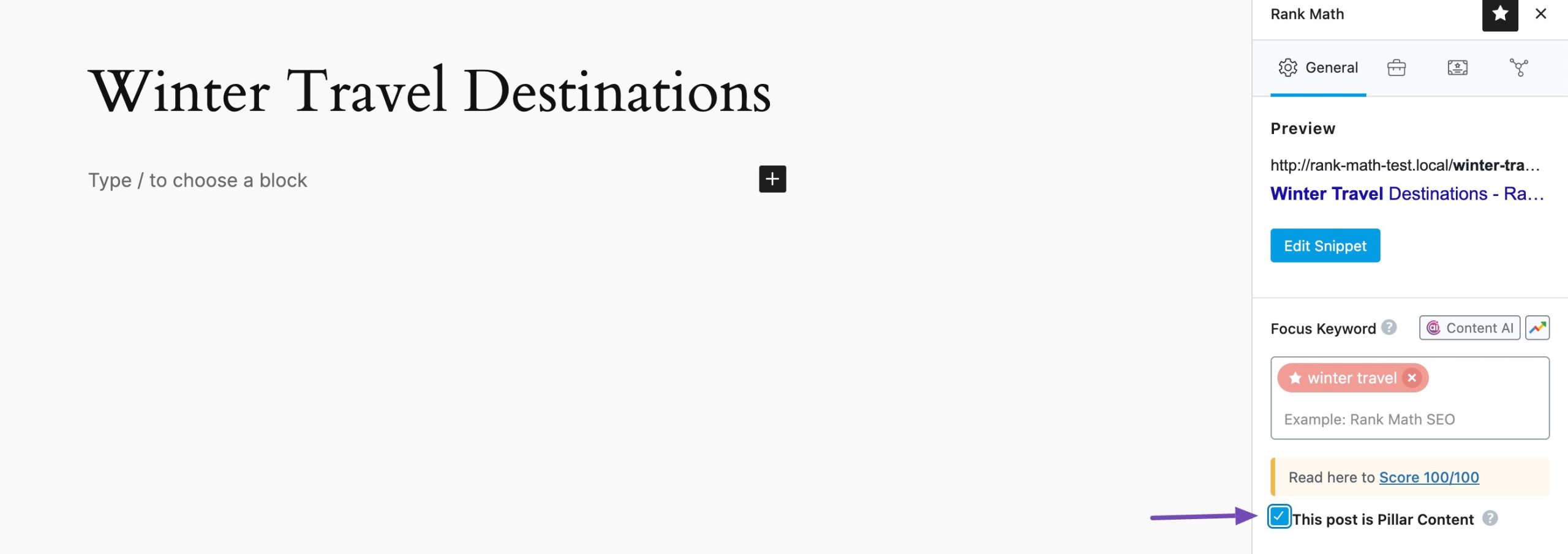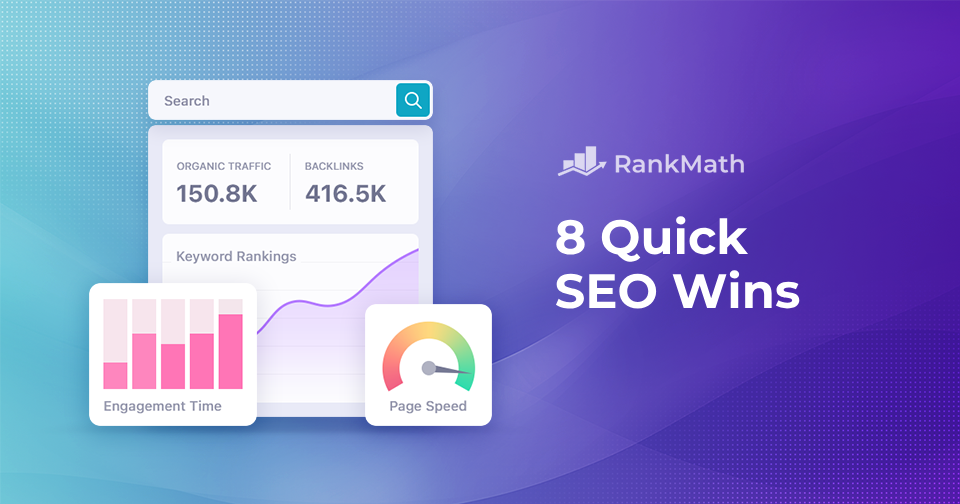If your website isn’t showing up on Google, it might as well be invisible. No matter how great your content or design is, without strong SEO, potential visitors may never find you.
The good news?
You don’t need to be an expert or spend months mastering complex strategies to see results. Small, smart changes can quickly improve your visibility, boost traffic, and create a better experience for your audience.
In this post, you’ll learn quick SEO wins, simple, actionable steps you can take right now to move up in search rankings and attract more visitors.
Ready to get those wins under your belt? Let’s get started.
Table Of Contents
- Use Instant Indexing to Speed Up Search Engine Indexing
- Target Keywords With Low Difficulty and High Traffic Volume
- Refresh Old and Underperforming Content for Quick SEO Wins
- Reduce Keyword Cannibalization
- Optimize Title Tags and Meta Descriptions
- Optimize Low-Hanging Featured Snippets
- Improve Internal linking Structure
- Fix Broken Backlinks
1 Use Instant Indexing to Speed Up Search Engine Indexing
Normally, search engines discover new content over time. But with Instant Indexing, you can notify them the moment a new page or post is live. This gets your content into search results much faster.
Here’s how to do it:
To submit URLs to IndexNow-enabled search engines (Bing, Yandex, etc), enable the Instant Indexing module available in the Rank Math FREE version.
To submit your URLs to Google, install a separate plugin named the Instant Indexing plugin on your WordPress site and connect it with your Google API.

Once done, navigate to the Console tab, enter a URL (or more) in the Instant Indexing section, and choose the Action as Google: Publish/update URL. Then, click the Send to API button.

Your URL will be noticed by Google almost instantly.
Refer to our dedicated tutorial on Google Indexing API to get Google to crawl your website instantly.
2 Target Keywords With Low Difficulty and High Traffic Volume
If you want quick SEO wins, start by targeting keywords that are easy to rank for but still attract a decent amount of traffic. These are the sweet-spot keywords, low competition yet high demand, that can bring you faster results without battling against established competitors.
Begin by using keyword research tools to find niche-specific terms with low difficulty scores and a good search volume. Once you have your list, weave these keywords naturally into your content so it feels easy to your readers while signaling relevance to search engines.

By focusing on these opportunities, you’ll boost your visibility, attract targeted visitors, and grow your site more efficiently than chasing after overly competitive terms.
3 Refresh Old and Underperforming Content for Quick SEO Wins
Refreshing old content helps deliver quick SEO results by breathing new life into existing pages and aligning them with current search trends.
When you update old content, search engines recognize that the page is active, relevant, and up-to-date, which can positively impact rankings.
Additionally, refreshing content can improve user engagement as readers find updates and valuable information, leading to longer page views and potentially higher conversions.
Also, updating underperforming content is a highly effective way to improve your site’s SEO without creating new content from scratch.

Reevaluate the keywords for which the content is currently ranking. If there are new relevant keywords with high search volume or low competition, include them naturally throughout the content.
Add or update headings, bullet points, and visuals like images, charts, or infographics to make the content more engaging and readable.
Don’t forget to add an FAQ section. By answering common questions in a clear, structured way, you increase your chances of being picked up by AI-powered results, giving you even more visibility.
4 Reduce Keyword Cannibalization
Keyword cannibalization occurs when multiple pages on your website target the same or extremely similar keywords, causing them to compete with each other in search engine rankings.
Instead of one strong page ranking highly, several pages dilute their authority, making it harder for any of them to rank well.

Reducing keyword cannibalization ensures that each page focuses on distinct keywords, helping search engines better understand your site’s content and improve your chances of ranking higher for each targeted term.
To identify keyword cannibalization with Rank Math, use the integrated Rank Tracker for accurate reporting.
Also, audit your content to identify pages that are ranking for the same keywords. If you find multiple pages competing for the same keyword, consider merging them into one comprehensive post.
Refer to our dedicated tutorial on keyword cannibalization to strengthen the authority of your content and achieve quick SEO wins.
5 Optimize Title Tags and Meta Descriptions
Title tags and meta descriptions are essential components of on-page SEO.
Visitors first see these elements when your website appears in search results.
A well-optimized title tag and meta description can improve your click-through rate (CTR), driving more traffic to your site.

They also help search engines understand the content of your page, making it easier for them to match your page with relevant queries. Optimizing these elements can improve rankings, traffic, and user experience.
Here are a few Quick SEO Wins for Title Tags and Meta Descriptions:
- Ensure Titles Are Under 60 Characters and Include Target Keywords:
Title tags should be concise and relevant, staying under 60 characters to avoid being cut off in search results. Include your primary keyword early in the title to signal to search engines what the page is about. - Write Compelling Meta Descriptions Under 160 Characters That Appeal to User Intent:
Meta descriptions should briefly summarize the page content while encouraging visitors to click. Although meta descriptions do not directly affect rankings, a well-written one can improve your CTR, which signals to search engines that your page is valuable. Include a call to action or explain why the visitor should visit your page.
You can use our Content AI to write compelling meta titles and descriptions.
6 Optimize Low-Hanging Featured Snippets
Featured snippets are prominent answer boxes at the top of search results, giving your content high visibility.
Optimizing for these snippets is a quick SEO win because it lets your site capture a top position without needing the #1 ranking.

Featured snippets also drive substantial traffic, as visitors often click on these results for quick answers. Targeting these snippets, especially for queries where you already rank on the first page, is an effective way to boost visibility and traffic quickly.
Include the target query within an H2 or H3 heading, followed by a clear, concise answer in the content below. Aim to be direct and informative so search engines can easily pull this answer into the snippet.
7 Improve Internal Linking Structure
Internal linking is an essential SEO practice that helps distribute page authority (link juice) across your website.
A well-structured internal linking strategy supports better rankings and helps search engines establish a content hierarchy, making it easier for them to prioritize your most important pages.

Go back through older posts and link them to newer content where appropriate. Use anchor text that naturally includes relevant keywords to improve SEO while guiding the audience to additional, helpful resources. Also, organize your links in a logical way that makes sense for both visitors and search engines.
Rank Math’s Pillar Content feature helps you build contextual internal links. You just need to mark any post that you want to build links to as a Pillar Post in the SEO meta box. To do so, edit your post, navigate to the General tab of Rank Math SEO, and click on This post is Pillar Content as shown below.

Every page on your site should link to at least one other relevant page. This prevents orphaned pages (pages with no internal links pointing to them), which are harder for search engines to find and rank.
By creating a network of interconnected pages, you enhance SEO and help visitors discover related content easily.
Refer to our dedicated tutorial on internal linking and achieve the SEO wins for your site.
8 Fix Broken Backlinks
Broken links are essential for both user experience and search engine performance.
When visitors encounter a broken link, it disrupts their journey through your site and can lead to frustration, potentially driving them away.

Additionally, search engines view broken links as a sign of poor site maintenance, which can negatively impact your rankings.
For Quick SEO wins, start using a broken link checker to identify all broken links across your website. Tools like Semrush or Ahrefs can help you quickly find these problematic links.
Once identified, address each broken link by redirecting it to a relevant, functioning page using a 301 redirect or replacing the link with updated, accurate content.
Refer to our dedicated tutorial to find and fix broken links on your site.
Conclusion
Quick SEO wins are all about making smart, simple changes that deliver noticeable results without overwhelming you.
By focusing on easy-to-implement tactics, like targeting low-difficulty keywords, refreshing old content, and optimizing for user experience, you can boost your rankings, drive more traffic, and strengthen your online presence faster than you might expect.
Remember, these wins may be quick, but they also lay the foundation for long-term SEO success. The key is to stay consistent: keep updating, keep refining, and keep looking for opportunities to improve.
Start applying these strategies today, and you’ll soon see your site climbing higher in search results while giving your visitors a better experience at the same time.
If you like this post, let us know by tweeting @rankmathseo.
